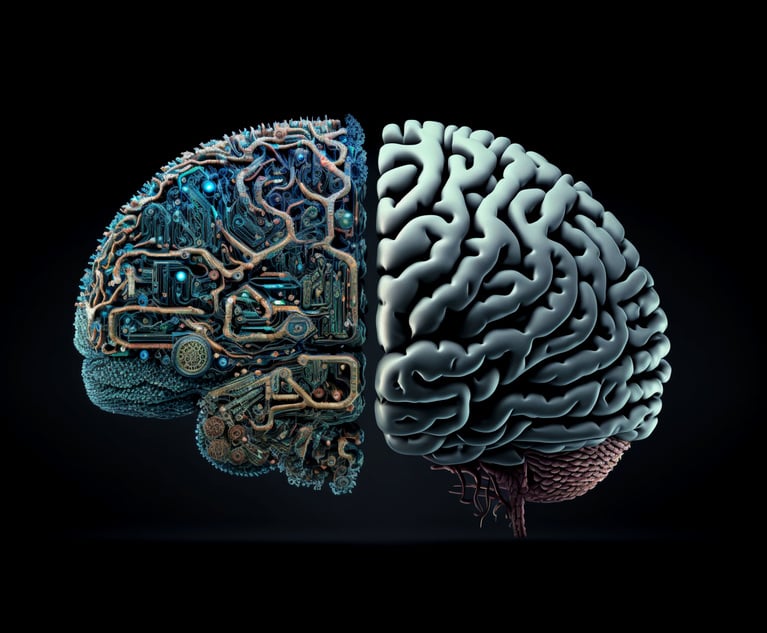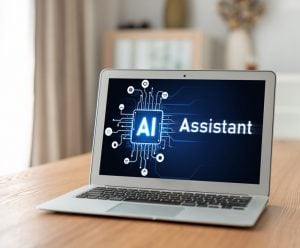How insurance AI improves trust, accuracy and personalization
AI bias occurs when an algorithm produces prejudiced results due to erroneous assumptions in the machine-learning process.

Knowledge-based generative artificial intelligence can quickly answer questions and execute complex workflows, according to a study by McKinsey & Company.
Gen AI insurance agents could one day act as skilled virtual coworkers, the data showed, by managing multiplicity, directing with natural language, and working with existing software tools and platforms to ease the automation of complex and open-ended use cases.
As Gen AI continues to impact global business at an increasing rate, PropertyCasualty360.com spoke to Provoke Solutions CEO Andy Lin about implementing the technology into today’s insurance industry.
PropertyCasualty360.com: What is the crucial role of AI-augmented human agents in maintaining accuracy and trust?
Lin: Agents provide speed and durability against a large quantity of data beyond the capabilities of humans. However, the AI generation of insights, recommendations and other content is always in need of the “human in the loop” philosophy when nuance and not so obvious context is in play.
Existing governance and compliance processes must continue to be enforced, by humans, but the output can and should be generated by AI around the clock and at velocities an order of magnitude or faster. This creates a world where results come faster, based on a larger dataset, and improves accuracy and trust.
PropertyCasualty360.com: How is AI improving predictive analytics to deliver personalized risk assessments?
Lin: AI is revolutionizing predictive analytics in insurance by utilizing datasets to identify patterns and trends that humans might miss. These capabilities allow for more accurate risk assessments that are tailored to the individual circumstances of each client.
By integrating various data points such as past claims history, real-time behavior data, and external variables, AI can forecast potential risks and outcomes with a higher degree of precision. This allows insurers to offer more personalized insurance packages.
Gen-AI in particular is elevating the quality of predictive analytics by combining large datasets with enterprise data and finally personal data. The NLP capabilities enable generated content to not only be more specific and targeted but more intuitive and easy to understand.
PropertyCasualty360.com: What is AI bias and how can it interfere with accuracy, trust, and personalized assessments?
Lin: AI bias occurs when an algorithm produces systematically prejudiced results due to erroneous assumptions in the machine learning process or biased data inputs. This can interfere with the accuracy of AI assessments, undermine trust in AI systems, and lead to a more one-size-fits-all approach to customers.

If not adequately addressed, AI bias can perpetuate inequalities and lead to decision-making that may adversely affect certain groups, eventually eroding the foundation of trust that insurance companies strive to build with their clients.
That said, common battle cries are to identify and correct all “bad data” but that is not a fight that can be won; a more appropriate approach would be to evaluate new data as it enters a system to quantify the risk of the data being bad and handle accordingly.
PropertyCasualty360.com: How does Explainable AI (XAI) enhance transparency and customer confidence?
Lin: Explainable AI (XAI) refers to AI systems designed to make their operations understandable to humans, providing clear explanations for their decisions. XAI enhances transparency by allowing customers and regulators to see the rationale behind AI-driven decisions. By demystifying AI processes, XAI helps build trust, ensuring that customers feel secure knowing that the AI systems handling their data and affecting their premiums are fair and reliable.
PropertyCasualty360.com: What is Ethical AI and how does it practice fairness and protect privacy?
Lin: Ethical AI involves developing and employing AI technologies in a manner that respects the rights and dignity of all individuals.
Ethical AI practices fairness by actively identifying and eliminating biases in data and algorithms. It protects privacy by adhering to stringent data protection standards and ensuring that personal information is used responsibly and with consent. Implementing Ethical AI is crucial for maintaining the social contract between insurers and the insured.
PropertyCasualty360.com: Can insurers guarantee ethical AI in their processes? Should they?
Lin: Guaranteeing ethical AI can be challenging due to the complexity and evolving nature of the technology, but insurers should strive to implement and govern their AI systems with the highest ethical standards.
This means continuous monitoring, regular auditing of AI systems for bias, and transparent communication about how AI is used and governed. Insurers should commit to these practices because they foster trust and align with the industry’s responsibility to treat clients fairly and protect their privacy. Ensuring ethical AI is a necessity when it comes to upholding the integrity and future sustainability of the insurance industry.
Andy Lin has been the CEO at Provoke Solutions since 2021. Prior to Provoke, Andy was chief sales and marketing officer at another services firm headquartered in the San Francisco Bay Area, where he helped the CEO develop and pivot to a new go-to-market. This resulted in a 38% CAGR between 2017 and 2020. Andy Lin brings an abundance of expertise and experience through his nearly 30 years of serving nearly every consulting position in the industry, starting his career as a software engineer with progressively increasing levels of responsibility and span of control. Andy received his BA in Biochemistry from the University of California, Berkeley.
See also:

